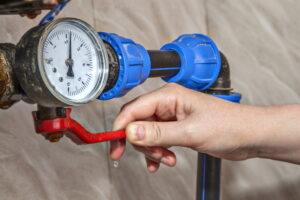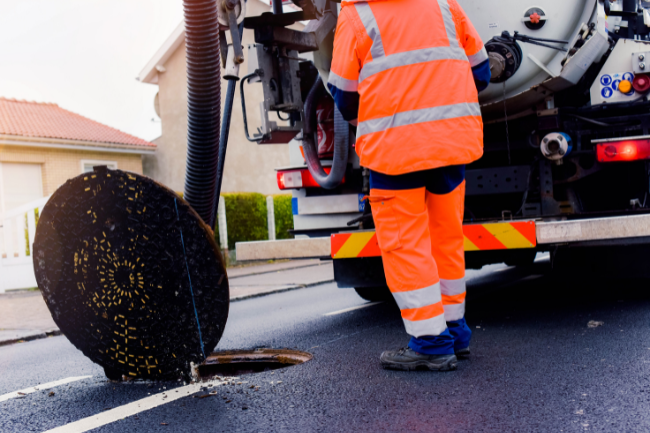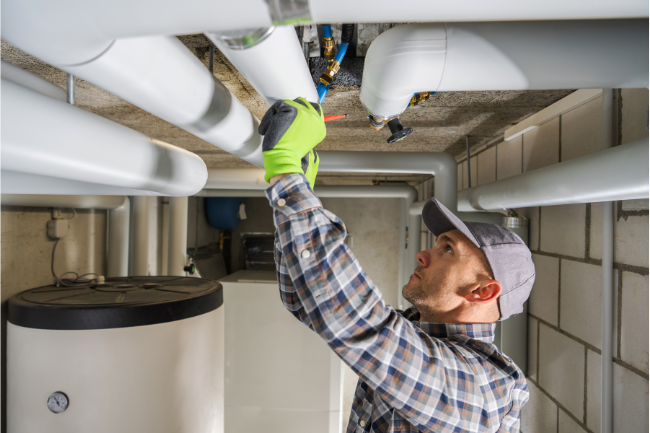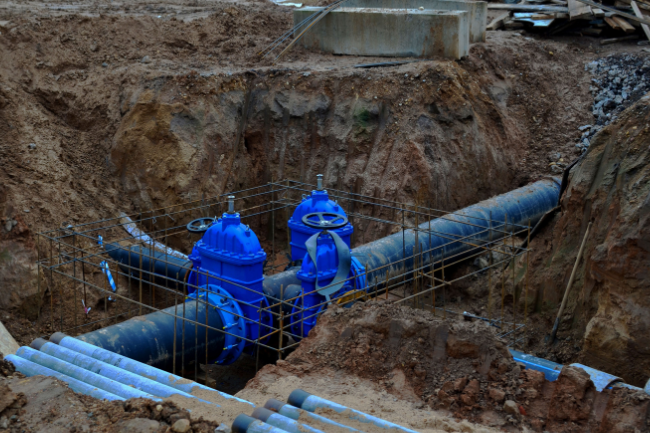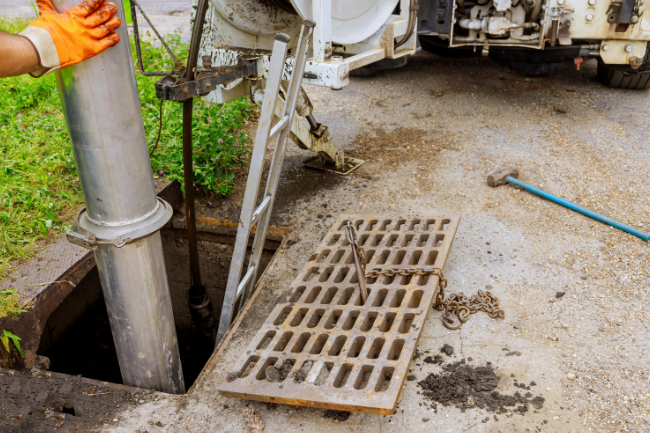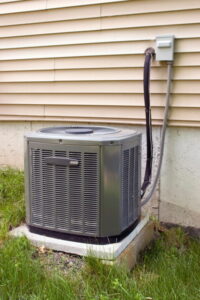Recognizing the signs of a plumbing emergency can be crucial in preventing minor problems from escalating into major disasters. Unattended plumbing issues not only lead to extensive property damage but also pose significant health risks, emphasizing the importance of an immediate response. This article will guide you through the key indicators of a plumbing emergency, aiding in quick identification and prompt action.
Recognizing the Signs of a Plumbing Emergency
Sudden Drop in Water Pressure
A sudden drop in water pressure is often the first indication of a plumbing emergency. You may notice this when you turn on your sink, shower, or other water fixtures and the flow of water is significantly less than usual. It could be localized, affecting only one area of your home, or widespread, signaling a bigger issue within your entire plumbing system. This could be due to a leak, a burst pipe, or even a problem with the local water supply. Regularly monitoring your water pressure, particularly if it seems to be decreasing over time, will help you identify potential problems early on. It’s always a good idea to call in professionals for a thorough examination when you experience a substantial drop in water pressure.
No Water Supply
Experiencing no water supply at all is a clear sign of a potential plumbing emergency. If you turn on your faucets and no water comes out, it could mean there’s a major issue with your home’s plumbing system that needs immediate attention. This could be due to a serious blockage in your pipes, a main water line break, or even a problem with the water supply from your local water company. It’s essential to check with your neighbors to see if they’re experiencing the same issue. If they aren’t, the problem is likely localized to your home. During winter, no water supply could also indicate frozen pipes, which is a serious issue that can lead to burst pipes if not addressed promptly. Whenever you encounter situations where there’s no water supply, it’s advisable to seek professional help at the earliest to prevent potential damage.
Overflowing Toilet
An overflowing toilet is a distinct and immediately noticeable sign of a plumbing emergency. It typically results from a severe blockage in the toilet or the main sewer line. The most common cause is flushing inappropriate items, such as sanitary products, diapers, or too much toilet paper. When the toilet overflow occurs, it can quickly lead to a messy, unsanitary situation that poses a risk to both your property and health. In cases where plunging doesn’t rectify the situation, or if the toilet overflows frequently, it’s a clear signal that professional intervention is necessary. A licensed plumber can accurately identify the cause of the problem and propose an effective solution. Do not ignore an overflowing toilet, as it often indicates more serious issues with your sewer system that require immediate attention.
Frozen Pipes
Frozen pipes constitute a serious plumbing emergency, particularly in regions with harsh winter conditions. The issue arises when water present within the pipes freezes and expands, leading to considerable pressure build-up. This pressure can cause the pipes to crack or burst, leading to significant water leakage once the ice thaws. Signs of frozen pipes include frost on the pipe’s surface, no water supply or limited water flow, and strange smells emanating from the faucet or drain. If you suspect your pipes have frozen, it’s imperative to act swiftly to minimize damage. Don’t attempt to thaw the pipes yourself, as this could lead to a burst pipe. Instead, turn off the main water supply and contact a professional plumber immediately. They can assess the situation, safely thaw the pipes, repair any damage, and provide advice to prevent future pipe freezing. Remember, preventing pipes from freezing is much easier and less costly than dealing with the aftermath of a burst pipe.
Sewage Backup
A sewage backup is another serious sign of a plumbing emergency that demands immediate attention. This issue is typically characterized by the unpleasant smell of sewage wafting from drains, toilets, or other plumbing fixtures, or by the appearance of sewage waste in bathtubs, sinks, or showers. The underlying causes for a sewage backup could range from simple clogs to more severe blockages in the main sewer line, or even a full collapse of the sewer line itself. This situation is extremely hazardous as it can lead to substantial property damage and poses severe health risks due to the presence of harmful bacteria and pathogens in sewage waste. If you notice any signs of a sewage backup, immediately halt the use of all water fixtures and appliances, and call a professional plumber. They can perform a thorough inspection, identify the root cause, and execute the necessary repairs to restore the normal functioning of your sewer system. Remember, quick and decisive action can prevent the issue from escalating and safeguard your property and health.
Unusual Noise
Unusual noise coming from your plumbing system is a sign that should not be ignored. These sounds can take various forms – you might hear banging, gurgling, or whistling noises. Banging, also known as ‘water hammer,’ usually occurs when the water flow is suddenly stopped, causing the pipes to shake. Gurgling sounds coming from your drains or toilets could indicate a blocked drain or malfunctioning drain vent. Whistling sounds may be a sign of a faulty valve or pipe obstruction. While these noises can be easily dismissed as harmless, they often indicate underlying issues within your plumbing system that can escalate if they remain unattended. Therefore, if you start hearing unusual sounds from your plumbing, it’s recommended that you seek professional help immediately. A qualified plumber can diagnose the cause and implement the necessary fixes, ensuring your plumbing system functions optimally and preventing potential damage.
Persistent Dripping
Persistent dripping from faucets or showerheads is a common sign of a plumbing issue that many homeowners tend to overlook. While a slow drip might not seem like an immediate emergency, a leaking faucet can waste substantial amounts of water over time, leading to inflated water bills. More crucially, consistent dripping could be indicative of a bigger underlying issue, such as a broken seal, corroded valve seat, or even high water pressure, which can cause damage to your plumbing system if left unchecked. The incessant sound of water dripping can also be quite bothersome, particularly during quieter hours. If you’re unable to rectify the dripping through basic repairs like tightening the faucet or replacing the washer, it’s advisable to call in a professional plumber. They can help identify the root cause of the persistent drip and provide an effective solution, preventing further wastage and potential damage to your plumbing system.
Foul Smells
Foul smells emanating from your plumbing system can be a significant sign of a plumbing emergency. These unpleasant odors, often reminiscent of rotten eggs, typically indicate either a blockage or a problem with your sewer system. A common cause is a dry p-trap, which is designed to keep sewer gases from entering your home. When it dries out, you may notice a rotten egg smell. This can happen if a sink, shower, or toilet hasn’t been used in a while. Blocked pipes can also emit foul odors due to the accumulation of food particles, grease, or other waste items. More seriously, if you notice a sewage smell, it could be due to a breach in the sewer line or a backup in the sewer system, both of which require immediate professional attention. Never ignore persistent foul smells in your home, as they can indicate serious plumbing issues that could lead to health hazards or structural damage if left unresolved. Contact a licensed plumber who can quickly diagnose the source of the odor and rectify the issue.
Rising Water Bills
An unexpected or significant increase in your water bills is a clear indication of a potential plumbing emergency. This could be a result of leaks in the plumbing system that are unnoticeable to the naked eye, running toilets, or dripping faucets. Small leaks can rapidly evolve into major issues if not addressed promptly, leading to extensive water wastage and causing your bills to skyrocket. Furthermore, increased water usage may also be attributed to faulty appliances or changes in water usage habits, but if these factors are ruled out and your water bill remains unusually high, a plumbing issue is often the culprit. When faced with a sudden surge in your water bill, it’s advisable to contact a professional plumber. They can perform a comprehensive inspection of your system, identify any leaks or malfunctions, and undertake the necessary repairs. Remember, early detection of these issues can prevent further escalation, saving you both water and money in the long run.
Mold and Damp Patches
Mold and damp patches on your walls, ceilings, or floors can be indicative of a serious plumbing problem. These signs are often a result of hidden leaks in your plumbing system that maintain a constant source of moisture, providing an ideal environment for mold growth and creating damp patches. This issue is particularly prevalent in damp, dark, and poorly ventilated areas like basements and behind cabinets. Mold can pose significant health risks, including allergies, respiratory issues, and in extreme cases, severe lung infections. The physical damage to your property can also be extensive, affecting the structural integrity of your home and leading to costly repairs. Damp patches might cause discoloration, peeling wallpaper, or warping of walls and flooring. If you observe the presence of mold or damp patches in your home, immediate action is required. A professional plumber can help identify the source of the leak, fix the problem, and prevent the issue from reoccurring. It’s also recommended to get a mold remediation specialist involved to ensure all mold is safely removed and your home returns to a safe living condition.
In summary, the signs of a plumbing emergency can manifest in a variety of ways, ranging from unusual sounds and persistent dripping to foul smells, rising water bills, and even the presence of mold and damp patches. While these symptoms can sometimes be innocuous, they often indicate underlying issues that can rapidly escalate into major problems if not addressed promptly. Thus, it’s crucial to stay vigilant and proactive in monitoring your plumbing system and seeking professional assistance at the first sign of trouble. A qualified plumber can diagnose the issue, implement the necessary repairs, and provide advice on preventing future issues, ensuring your plumbing system functions optimally and maintaining the structural integrity and safety of your home.
